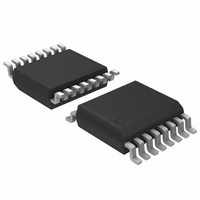ADT7483AARQZ-REEL7 ON Semiconductor, ADT7483AARQZ-REEL7 Datasheet - Page 22

ADT7483AARQZ-REEL7
Manufacturer Part Number
ADT7483AARQZ-REEL7
Description
IC TEMP SENSOR/ALARM 3CH 16-QSOP
Manufacturer
ON Semiconductor
Datasheet
1.ADT7483AARQZ.pdf
(24 pages)
Specifications of ADT7483AARQZ-REEL7
Function
Temp Monitoring System (Sensor)
Topology
ADC, Comparator, Multiplexer, Register Bank
Sensor Type
External & Internal
Sensing Temperature
-40°C ~ 125°C, External Sensor
Output Type
SMBus™
Output Alarm
Yes
Output Fan
Yes
Voltage - Supply
3 V ~ 3.6 V
Operating Temperature
-40°C ~ 125°C
Mounting Type
Surface Mount
Package / Case
16-QSOP
Lead Free Status / RoHS Status
Lead free / RoHS Compliant
ADT7483A
APPLICATIONS
NOISE FILTERING
For temperature sensors operating in noisy environments,
previous practice was to place a capacitor across the D+ and D−
pins to help combat the effects of noise. However, large capacitances
affect the accuracy of the temperature measurement, leading to a
recommended maximum capacitor value of 1,000 pF.
FACTORS AFFECTING DIODE ACCURACY
Remote Sensing Diode
The ADT7483A is designed to work with substrate transistors
built into processors or with discrete transistors. Substrate
transistors will generally be PNP types with the collector
connected to the substrate. Discrete types can be either a PNP
or NPN transistor connected as a diode (base shorted to
collector). If an NPN transistor is used, the collector and base
are connected to D+ and the emitter to D−. If a PNP transistor
is used, the collector and base are connected to D− and the
emitter to D+.
To reduce the error due to variations in both substrate and
discrete transistors, the following factors should be taken into
consideration:
•
•
The ideality factor,
deviation of the thermal diode from ideal behavior. The
ADT7483A is trimmed for an
following equation to calculate the error introduced at a
temperature,T (°C) when using a transistor whose
not equal 1.008. Consult the processor data sheet for the
values.
To factor this in, write the ΔT value to the offset register. It
is then automatically added to, or subtracted from, the
temperature measurement by the ADT7483A.
Some CPU manufacturers specify the high and low current
levels of the substrate transistors. The high current level of
the ADT7483A, I
I
the current levels specified by the CPU manufacturer, it may
be necessary to remove an offset. Refer to the CPU data
sheet to determine whether this offset needs to be removed
and how to calculate it. This offset is programmed to the
offset register. It is important to note that if more than one
offset must be considered, program the algebraic sum of
these offsets to the offset register.
LOW
, is 12 μA. If the ADT7483A current levels do not match
Δ
=
(
–
. 1
008
HIGH
f
)
, of the transistor is a measure of the
, is 200 μA, and the low level current,
/
. 1
008
×
(
273
f
value of 1.008. Use the
.
15
+
)
Rev. 1 | Page 22 of 24 | www.onsemi.com
f
does
f
If a discrete transistor is used with the ADT7483A, the best
accuracy is obtained by choosing devices according to the
following criteria:
•
•
•
•
Transistors such as 2N3904, 2N3906, or equivalents in SOT-23
packages, are suitable devices to use.
THERMAL INERTIA AND SELF-HEATING
Accuracy depends on the temperature of the remote sensing
diode and/or the local temperature sensor being at the same
temperature as that being measured. A number of factors can
affect this. Ideally, the sensor should be in good thermal contact
with the part of the system being measured. If it is not, the
thermal inertia caused by the sensor’s mass causes a lag in the
response of the sensor to a temperature change. In the case of
the remote sensor, this should not be a problem, since it will
either be a substrate transistor in the processor or a small
package device, such as SOT-23, placed in close proximity to it.
The on-chip sensor, however, is often remote from the
processor and only monitors the general ambient temperature
around the package. In practice, the ADT7483A package will be
in electrical, and hence thermal, contact with a PCB and may
also be in a forced airflow. How accurately the temperature of
the board and/or the forced airflow reflects the temperature to
be measured will also affect the accuracy. Self-heating, due to
the power dissipated in the ADT7483A or the remote sensor,
causes the chip temperature of the device or remote sensor to
rise above ambient. However, the current forced through the
remote sensor is so small that self-heating is negligible. In the
case of the ADT7483A, the worst-case condition occurs when
the device is converting at 64 conversions per second while
sinking the maximum current of 1 mA at the ALERT and
THERM output. In this case, the total power dissipation in the
device is about 4.5 mW. The thermal resistance, θ
QSOP-16 package is about 150°C/W.
Base-emitter voltage greater than 0.25 V at 6 μA, at the
highest operating temperature.
Base-emitter voltage less than 0.95 V at 100 μA, at the
lowest operating temperature.
Base resistance less than 100 Ω.
Small variation in h
control of V
BE
characteristics.
FE
(50 to 150) that indicates tight
JA
, of the





